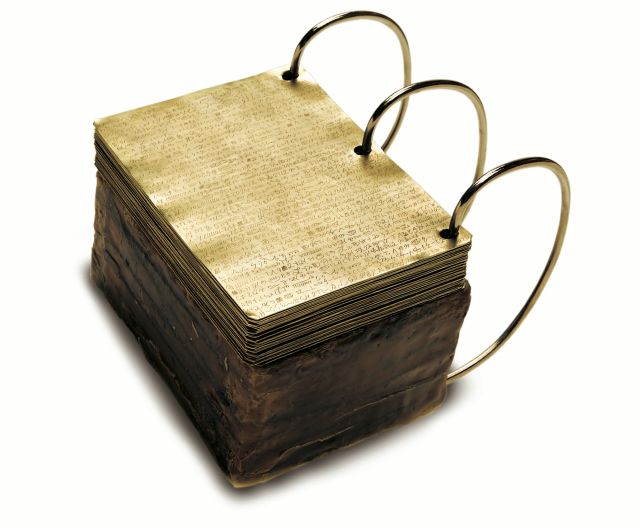In my setting (pretty generic medieval fantasy), certain valuable texts can simply not be copied (because of certain religious beliefs, a will to protect information through secrecy or because of some magical "DRMs") therefore, only a single volume exists. Kept in libraries, safes and caches.
Fires can very easily ruin most common writing materials : Paper, cardboard, papyrus and bark are all very flammable.
Since, even with magic, light is mostly produced by flames that create heat, it is important for those text to be fireproof to a certain degree.
The scribes would like to employ a material that has the following qualities (in order of importance) :
- Fire-Resistant (should resist the fire of a raging torch or a small campfire without significant damage to the text)
- Does not degrade with time (Can be kept in a box away from the light for a century and still be readable)
- Thin & Lightweight (so that it can be made into volumes that aren't overly large.)
- Waterproof (the material itself will not be damaged, rot or degrade if soaked or humid for a prolonged amount of time.)
Ink is not an issue for this particular exercise as the color of a material can be changed with magic (it is therefore possible to permanently change to color of certains parts of a material, resulting in text.) but bonus point if some specific ink can be used as well.
Is there any good materials that would fit those criteria ?
It is not necessary for the material to be accessible during the middle-ages, chemistry, complex metalworking and other advanced solutions are all on the table.



